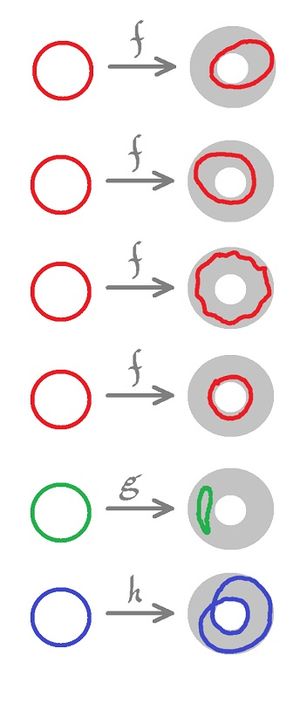This site is being phased out.
Homology of homotopic maps
Redirect to:
We know that if the realizations of two cell complexes are homeomorphic then their homology groups are isomorphic: $$|K| ≈ |L| => H_*(K) = H_*(L).$$
So, there is some "room for error" in terms of homology.
But what about cell maps and their homology maps? When do two different maps induce the same linear operator/homomorphism on homology?
Let's consider an example. Let f and g be two maps of the circle, represented by a triangle, to itself: g is the identity and f is a rotation.
The maps are different and the corresponding chain maps are different too, but the homology maps are the same: $$f_*(a + b + c) = a' + b' + c',$$ $$g_*(a + b + c) = a' + b' + c'.$$ Now, $f$ can be "continuously transformed" into $g$. Indeed, one can gradually slide $f(x)$ toward $g(x)$. In fact it's easy to think of a simple formula: $$F(t,x) = (1-t)f(x) + tg(x),$$ where $t$ is "time". This transformation is called homotopy.
This kind of gradual transformation is easier to see when the maps don't have to be simplicial, such as these maps of the circle to the ring:
They can be moved and stretched as if they were rubber bands.
The first four maps can be "homotoped" into each other and for these $$f_*(a) = a'$$ but not the last one and for this $$f_*(a) = 0.$$
Theorem. If two maps are homotopic, they induce the same homology maps: $$f \sim g => f_* = g_*.$$

